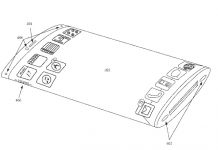 At TechCrunch, Alexia Tsotsis posts an interesting meditation on how tricky most household appliance interfaces have become. Coffee makers, microwave ovens, even pepper grinders have become much more complex than they used to be—sometimes hilariously so:
At TechCrunch, Alexia Tsotsis posts an interesting meditation on how tricky most household appliance interfaces have become. Coffee makers, microwave ovens, even pepper grinders have become much more complex than they used to be—sometimes hilariously so:
Many people received iPads and iPhones this Christmas, and because of Apple’s legendary intuitive and straightforward design, could pull them right out of the box and commence using. Not the case with a battery powered pepper grinder one of my relatives received at our gift exchange. It took three people to put together and when we did get it to work, we hilariously realized that it had a flashlight at the bottom, for no reason. Novel? yes. Productive? No.
But far more often frustratingly so. She uses the examples of a coffee maker that she couldn’t figure out how to put the water in, and how much more complicated microwaves are than they used to be. Microwaves of old had approximately one control: a knob that controlled how long the device nuked the food for. (We still have some of those in the cafeteria/lounge at my work.)
And to this I would add some of my own experiences doing tech support for ordinary, average people who call in with questions about their computers. Even the interfaces that designers think are simple and easy to understand are going to give somebody trouble. (The other day, I had to explain to someone how to open a Gmail message. Really.) And sometimes a lot of somebodies.
Some of the biggest offenders are printers (how I shudder when the opening words of any call are, “I just got this printer, and…”) and wi-fi routers, but laptops are problematic, too—and one of the biggest problems is figuring out how to turn wifi on, something that should be dead simple but is not because no computer manufacturer ever makes the switch easy to find. (Easy to bump by accident, on the other hand, is another matter.) My brother tells the story of a friend who didn’t know her laptop had wi-fi despite having owned it for a year.
But to get back to the point Alexia is making, Apple does a pretty decent job of making things dead simple for its users. (For that matter, so does Amazon with the Kindle, which is why the Kindle is grabbing the lion’s share of the e-book market.) But I have to point out that even their products can confuse users. I get a number of Mac OS X calls in addition to Windows calls at Geek Squad.
And then there’s the story of the time I had the bright idea to have my parents get a refurbished iPod Nano to listen to music and audiobooks on. They couldn’t figure out how to get it set up, and eventually lost it. Whoops.
Whether it’s Apple or not, technological gadgets have been succumbing to “creeping featurism” for at least the last couple of decades. If it’s possible to make something do more, then by all means we must make it do more, regardless of whether that’s going to do anything other than confuse the average person. For example, a lot of Japanese cell phones are packed with amazing features undreamed of in American models, but also unused by most Japanese users—because the manufacturers feel they have to have more features than their competition; it’s a selling point.
And the same thing is true across all areas of technology, as 60 Minutes reported back in 2007. And that includes e-book readers. Most of the e-book readers I’ve tested, I honestly would not try to give to my parents, out of fear I simply couldn’t teach them how to put books on it. I had planned to go in with my brothers to get them an iPod Touch for Christmas, and even then had resigned myself to having provide many tech support lessons. (We decided to go with another collective gift instead.)
I suppose the moral is, never underestimate the value of a simple interface in winning customers’ hearts and minds. It’s worked for Apple and for Amazon. But even the simplest of interfaces is going to be too complicated for someone. That’s why I have a day job.































I received an iPad and a Nook Color for Xmas this year. Though I wouldn’t say they were hard to figure out, it doesn’t take long before you’ve reached the edge of what these devices are initially built for, and suddenly find yourself thrashing through the uncharted territories of Apps and customized features. And that can be just as frustrating as assembling any pepper grinder or figuring out the WiFi settings on a new toy.
I’m kind of curious – exactly what features do Japanese cell phones have that people don’t use?
Frode: See this article. Which I suppose I should have bothered to dig up and link within the article itself at the time.